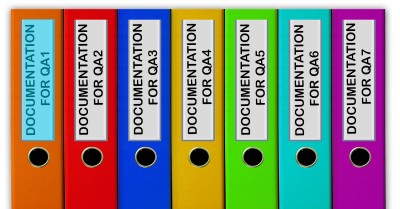Quality Area 1 – Educational Program and Practice, informs educators to implement intentional and responsive practices balanced with child-directed learning. It also draws attention to the importance of engaging in critical reflection to drive program planning and the assessment and planning cycle. The following lists the documentation services required to have to support the achievement of QA1 in each element.
1.1 - The Educational Program Enhances Each Child’s Learning and Development.
1.1.1 - Curriculum decision-making contributes to each child’s learning and development outcomes in relation to their identity, connection with the community, well-being, confidence as learners and effectiveness as communicators.
Documentation to support this includes:
- documentation that has been gathered in a variety of ways about children’s progress towards the learning outcomes and planning that establishes further learning goals
- documented programs that include planned experiences and/or strategies to support individual children’s goals
- documented programs demonstrating that an assessment of the learning outcomes has led to goals being identified for the group of children that are designed to intentionally support aspects of learning
1.1.2 – Each child’s current knowledge, strengths ideas, culture, abilities and interests are the foundation of the program.
Documentation to support this includes:
- examples of how educators plan programs that are responsive to children’s knowledge, strengths, ideas, culture, abilities and interests
- evidence that information about each child, their family, culture and community is collected and used to plan programs
- evidence that information about each child, their family, culture and community is collected and used to plan programs that promote children’s learning, development and wellbeing
1.1.3 – All aspects of the program, including routine, are organized in wants that maximized opportunities for each child’s learning.
Documentation to support this includes:
- policy documentation outlining routines and the written program, including examples of how educators plan programs that are maximising opportunities for learning
1.2 - Educators Facilitate and Extend Each Child’s Learning and Development
1.2.1 – Educators are deliberate, purposeful and thoughtful in their decisions and actions.
Documentation to support this includes:
- the written program
- team meeting minutes when intentional teaching strategies have been discussed
- documented examples of reflective practice
- planning documentation that identifies resources to support ongoing learning
- documentation that monitors children’s learning, wellbeing and engagement
1.2.2 – Educators respond to children’s ideas and play and extend children’s learning through open-ended questions, interactions and feedback.
Documents to support this includes:
- documented reflective practice
- documentation and monitoring of children’s learning, development, wellbeing and engagement
- project or inquiry work where children are given the opportunity to take the lead in an investigation or collaborate with peers, teachers, family members and other members of the community
1.2.3 – Each child’s agency is promoted enabling them to make choices and decisions that influence events and their world.
Documentation to support this includes:
- the service’s philosophy statement that recognises children’s rights and describes their role in decision-making
- documented reflections that demonstrate changes in practice to support children’s agency
- work developed by children with minimal educator input
- use of open-ended resources and materials that allow children to express themselves (rather than using templates, stencils or resources that limit children’s capacity to create, interpret, experiment and explore).
1.3 – Educators and Coordinators Take A Planned And Reflective Approach To Implementing the Program For Each Child.
1.3.1 – Each child’s learning and development is assessed or evaluated as part of an ongoing cycle of observation, analysis learning, documentation, planning, implementation and reflection.
Documentation to support this includes:
- information gathered about each child that shows that educators understand each child and their learning and development including their learning styles and any identified support for that child
- examples of children’s representation of their learning and other work is documented and displayed in sensitive and respectful ways
- examples of families and children having opportunities to comment on or provide feedback about the program
- documented analysis of each child’s learning and development, using the learning outcomes as points of reference, that assists in planning for each child information about what has occurred during the program so that families know the learning opportunities and experiences that have been offered to their children
- documented evidence of each child’s developmental needs, interests, experiences and participation in the program
1.3.2 – Critical reflection on children’s learning and development both as individuals and in groups, drives program planning and implementation.
Documentation to support this includes:
- documentation that shows evidence of critical reflection, such as reflection journals or diaries
- documentation that reflects on all aspects of the program
- jottings about - the effectiveness of arrivals/departures, interactions, responsiveness and relationships with particular children, transitions and routines, planned experiences and spontaneous child-directed learning, incidental and planned group times, the environment and experiences provided, intentional teaching strategies, communication with colleagues and families, any other aspects of practice to prompt further thinking and discussion, the effectiveness of resources and equipment used, experiences and learning outcomes achieved, review of curriculum content and pedagogy
- if the service has a Strategic Inclusion Plan, how the service reflects on, adaptations made to reduce barriers to participation
1.3.3 – Families Are Informed About The Program And Their Child’s Progress
Documentation to support this includes:
- documentation (such as a communication plan) that demonstrates that families have been consulted about how they would like to receive information about their child’s progress
- a range of strategies being implemented to share information with families in meaningful and useful ways
- documented expectations about the ways educators share information with families such as through conversations, emails, phone calls, communication books, offering meetings at mutually convenient times
- documented expectations about how educators record information from families
- transition statements for children transitioning to school
- the educational program, including planning and reflections for families about the experiences and learning that have occurred
- the educational program displayed in an accessible location for families to view and understand documented information about each child’s developmental needs, interests, experiences, participation and progress that is shared with families
Click to download: Supporting Doc QA1 Checklist - a checklist of documentation (listed above) that is required in order to achieve Quality Area 1 -Educational Program and Practice.
For a list of outcomes under each element: How To Achieve Quality Area 1



 Here is the list of the EYLF Learning Outcomes that you can use as a guide or reference for your documentation and planning. The EYLF
Here is the list of the EYLF Learning Outcomes that you can use as a guide or reference for your documentation and planning. The EYLF The EYLF is a guide which consists of Principles, Practices and 5 main Learning Outcomes along with each of their sub outcomes, based on identity,
The EYLF is a guide which consists of Principles, Practices and 5 main Learning Outcomes along with each of their sub outcomes, based on identity, This is a guide on How to Write a Learning Story. It provides information on What Is A Learning Story, Writing A Learning Story, Sample
This is a guide on How to Write a Learning Story. It provides information on What Is A Learning Story, Writing A Learning Story, Sample One of the most important types of documentation methods that educators needs to be familiar with are “observations”. Observations are crucial for all early childhood
One of the most important types of documentation methods that educators needs to be familiar with are “observations”. Observations are crucial for all early childhood To support children achieve learning outcomes from the EYLF Framework, the following list gives educators examples of how to promote children's learning in each individual
To support children achieve learning outcomes from the EYLF Framework, the following list gives educators examples of how to promote children's learning in each individual Reflective practice is learning from everyday situations and issues and concerns that arise which form part of our daily routine while working in an early
Reflective practice is learning from everyday situations and issues and concerns that arise which form part of our daily routine while working in an early Within Australia, Programming and Planning is reflected and supported by the Early Years Learning Framework. Educators within early childhood settings, use the EYLF to guide
Within Australia, Programming and Planning is reflected and supported by the Early Years Learning Framework. Educators within early childhood settings, use the EYLF to guide When observing children, it's important that we use a range of different observation methods from running records, learning stories to photographs and work samples. Using
When observing children, it's important that we use a range of different observation methods from running records, learning stories to photographs and work samples. Using This is a guide for educators on what to observe under each sub learning outcome from the EYLF Framework, when a child is engaged in
This is a guide for educators on what to observe under each sub learning outcome from the EYLF Framework, when a child is engaged in The Early Years Learning Framework describes the curriculum as “all the interactions, experiences, activities, routines and events, planned and unplanned, that occur in an environment
The Early Years Learning Framework describes the curriculum as “all the interactions, experiences, activities, routines and events, planned and unplanned, that occur in an environment


